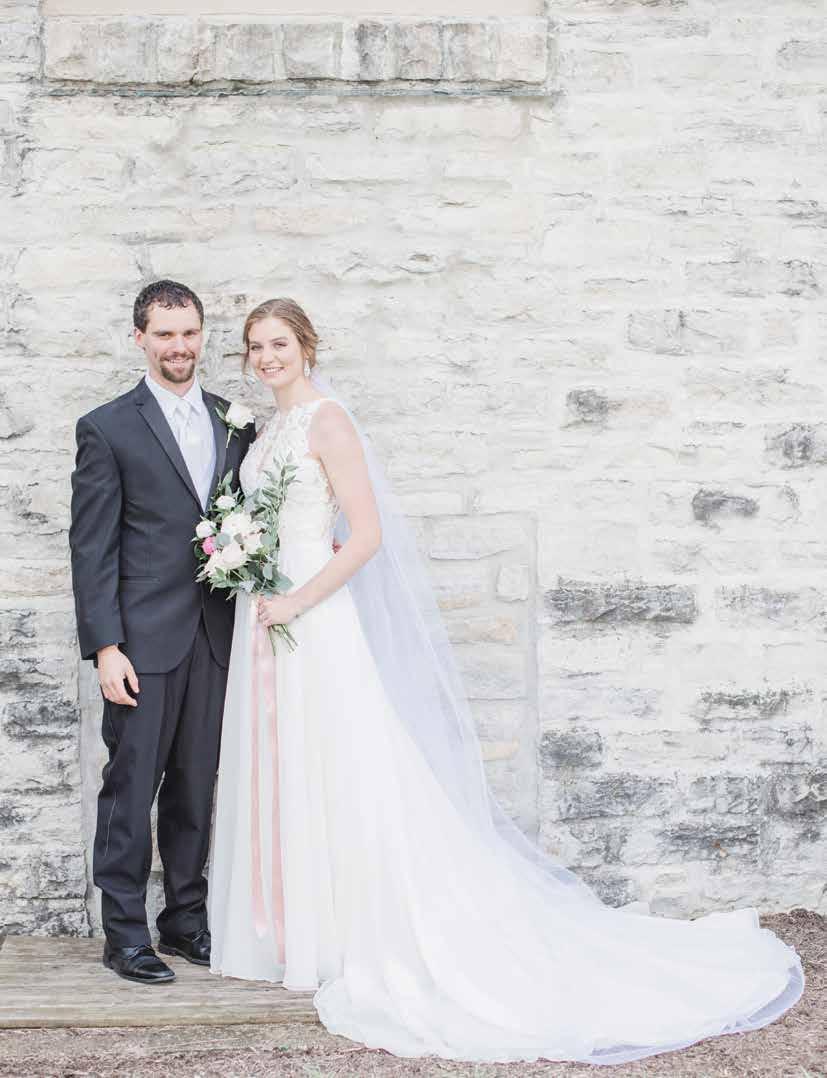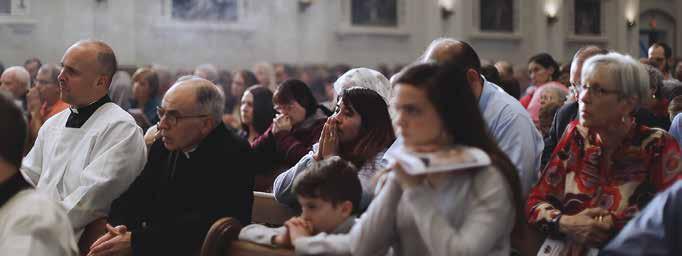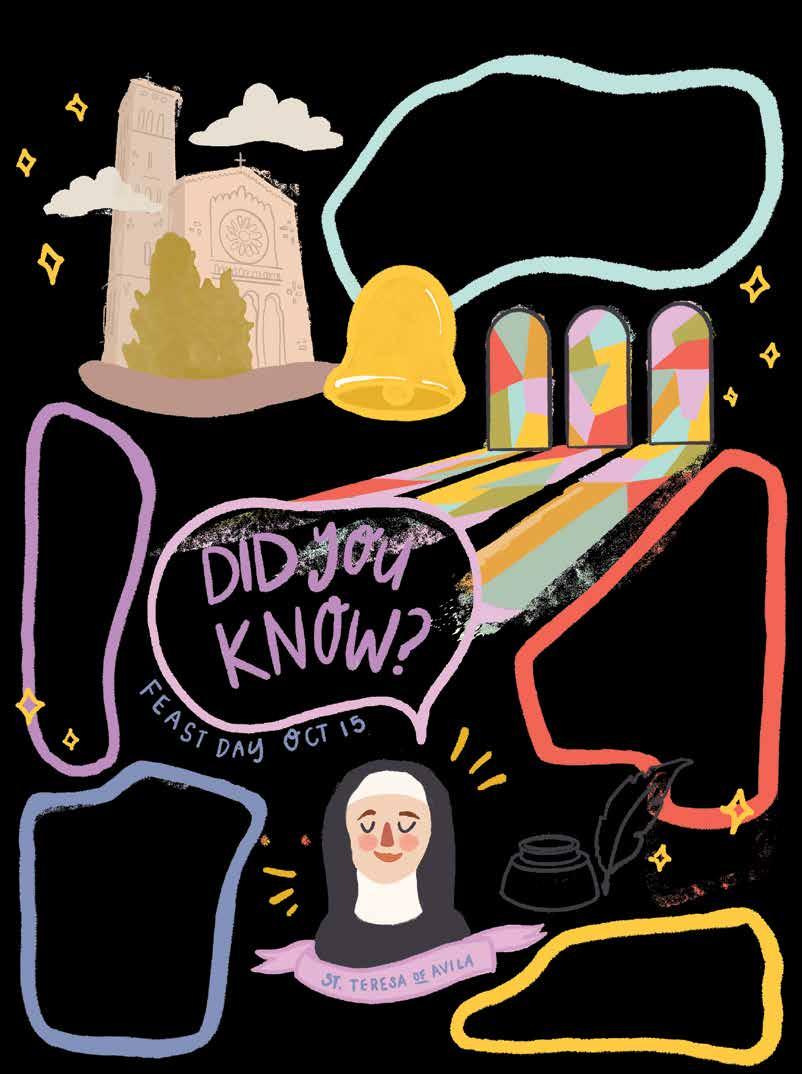OUR CATHOLIC SCHOOL FAMILY Banding Together in Unprecedented Times B Y JES S IC A RINAUD O
I’ll never forget the day Governor DeWine announced that schools across the state of Ohio would be closing in response to the coronavirus pandemic. As a full-time working mother of four children in Catholic schools, my feelings were a mix of shock, anxiety and incredulity. How, I thought, was I going to manage my workload while educating my children in the midst of a lockdown? My fears weren’t without merit. The scramble to close schools and shift to an entirely new teaching and learning plan over the course of a few days left teachers, parents and students overwhelmed and trying to do their best in the situation in which they found themselves. “Initially, I was in shock, and I think everyone was,” said Guardian Angels School first grade teacher Rachel Rodrigue. “Then I was worried and concerned about what the rest of the year would look like. This was unprecedented, and teachers had only one day to prepare three weeks of learning, which ultimately led to the rest of the year. I had a lot of questions. My main worry was the children and their wellbeing.” Despite this daunting task, across the Archdiocese of Cincinnati, Catholic elementary and high schools met the challenge head on and rose to the occasion. MAINTAINING CONNECTION
“For us, there were a couple of key questions that we had to answer right away,” said Carroll High School principal Matt Sableski. “Number one was how do we keep our kids engaged and learning? And number two, how are we going to ensure 1 2 | TH E C A THOLIC TELE GR A PH
that our students would have access to the learning?” Schools all faced the same problem: ensuring students had digital access to their teachers. Their answers to the problems varied, but they did find solutions, and quickly. Carroll High School worked to set up wi-fi hotspots for all of their students. Guardian Angels School offered extra tablets for families to borrow so students could have home computers to complete their work. “We wanted to focus on instruction and make sure our students were seeing their teachers every single day,” said Sableski. “We were able to take care of them not only academically, but see if they were emotionally OK. Are their needs being met?” Similarly, my own elementary-school-aged children continued to interact with their teachers via online instruction, and their instructors responded to our email questions in real time, at all hours of the day and well into the evenings. “I learned that flexibility is key,” said Rodrigue. “This was not an experience anyone could prepare for, so learning new teaching methods, being flexible, being creative and being understanding were all so important.” The message was clear: Catholic Schools are there for their students and their families. “It was a welcome situation that Carroll still had a schedule to adhere to and school work, interaction with their teachers, and somewhat of an interaction with other students. So that
















